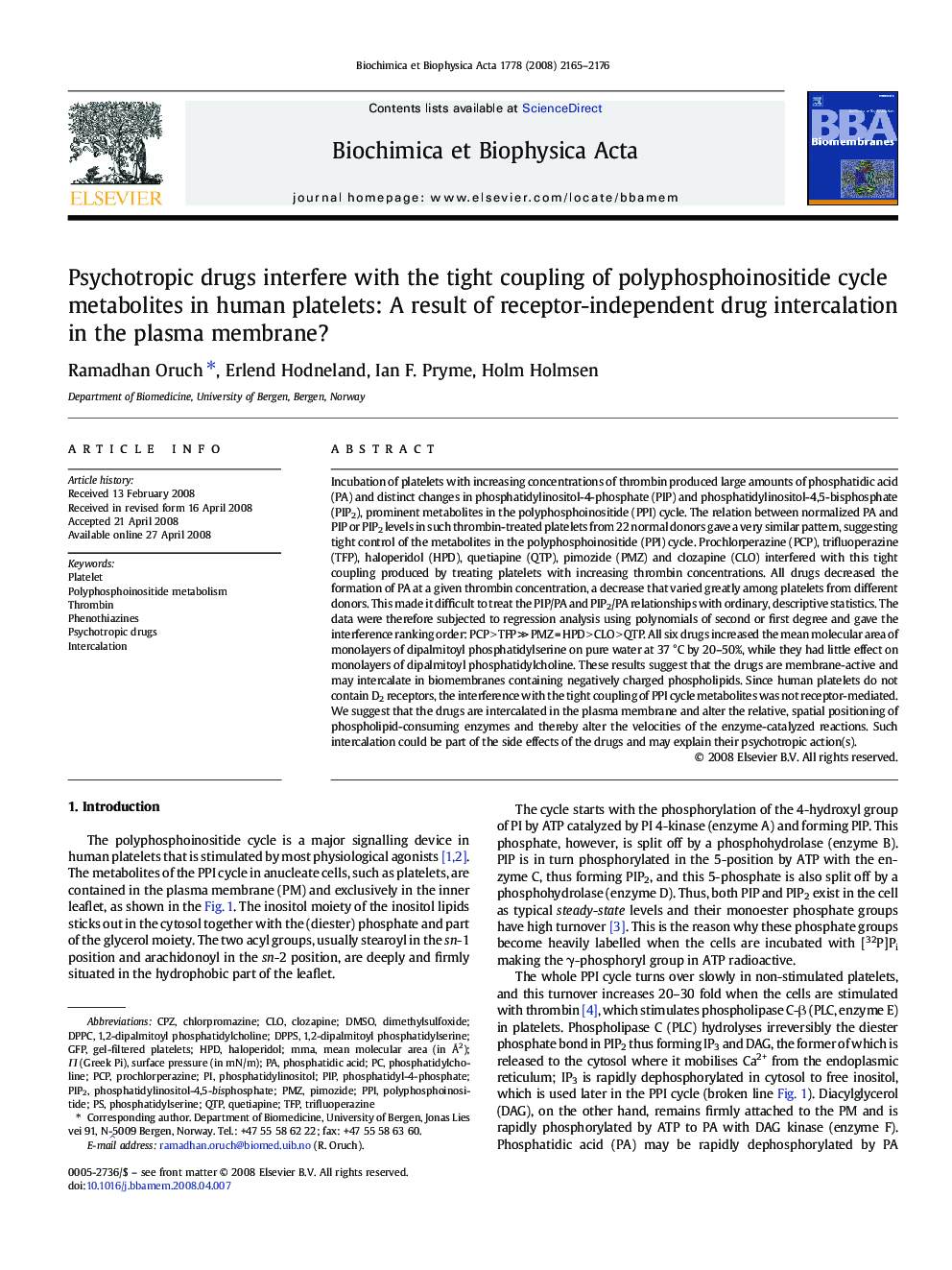| کد مقاله | کد نشریه | سال انتشار | مقاله انگلیسی | نسخه تمام متن |
|---|---|---|---|---|
| 1945454 | 1053265 | 2008 | 12 صفحه PDF | دانلود رایگان |

Incubation of platelets with increasing concentrations of thrombin produced large amounts of phosphatidic acid (PA) and distinct changes in phosphatidylinositol-4-phosphate (PIP) and phosphatidylinositol-4,5-bisphosphate (PIP2), prominent metabolites in the polyphosphoinositide (PPI) cycle. The relation between normalized PA and PIP or PIP2 levels in such thrombin-treated platelets from 22 normal donors gave a very similar pattern, suggesting tight control of the metabolites in the polyphosphoinositide (PPI) cycle. Prochlorperazine (PCP), trifluoperazine (TFP), haloperidol (HPD), quetiapine (QTP), pimozide (PMZ) and clozapine (CLO) interfered with this tight coupling produced by treating platelets with increasing thrombin concentrations. All drugs decreased the formation of PA at a given thrombin concentration, a decrease that varied greatly among platelets from different donors. This made it difficult to treat the PIP/PA and PIP2/PA relationships with ordinary, descriptive statistics. The data were therefore subjected to regression analysis using polynomials of second or first degree and gave the interference ranking order: PCP > TFP ≫ PMZ = HPD > CLO > QTP. All six drugs increased the mean molecular area of monolayers of dipalmitoyl phosphatidylserine on pure water at 37 °C by 20–50%, while they had little effect on monolayers of dipalmitoyl phosphatidylcholine. These results suggest that the drugs are membrane-active and may intercalate in biomembranes containing negatively charged phospholipids. Since human platelets do not contain D2 receptors, the interference with the tight coupling of PPI cycle metabolites was not receptor-mediated. We suggest that the drugs are intercalated in the plasma membrane and alter the relative, spatial positioning of phospholipid-consuming enzymes and thereby alter the velocities of the enzyme-catalyzed reactions. Such intercalation could be part of the side effects of the drugs and may explain their psychotropic action(s).
Journal: Biochimica et Biophysica Acta (BBA) - Biomembranes - Volume 1778, Issue 10, October 2008, Pages 2165–2176